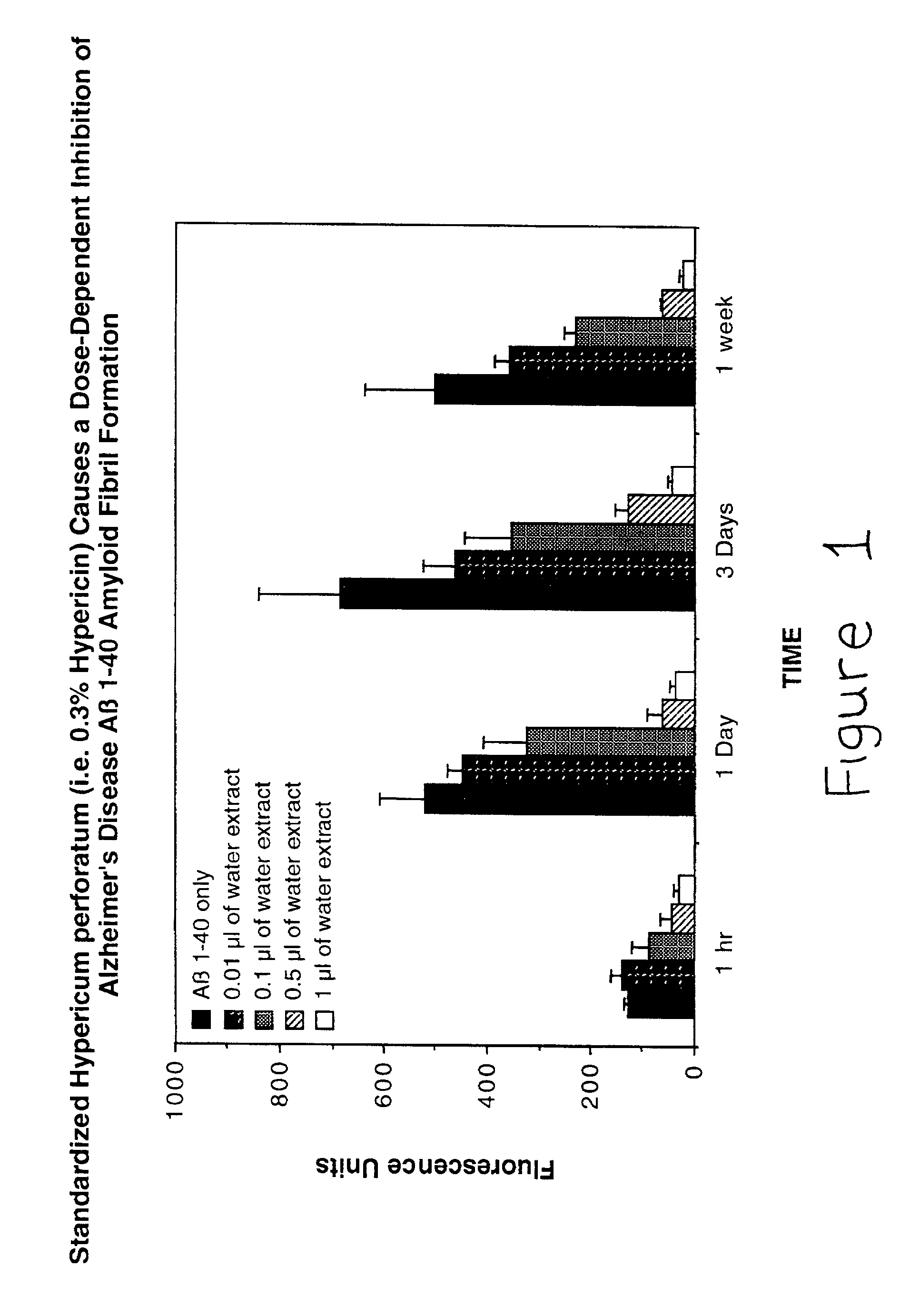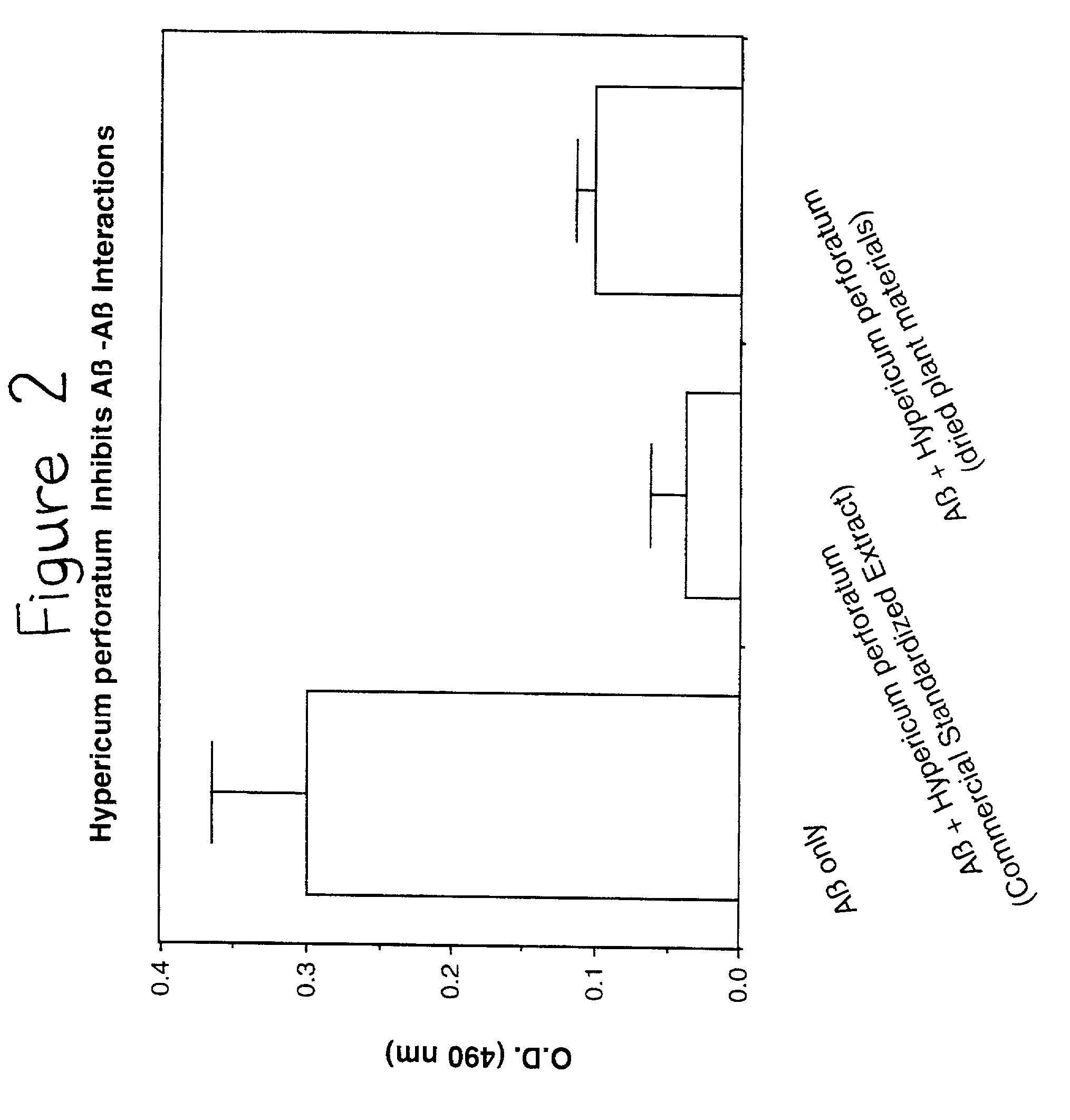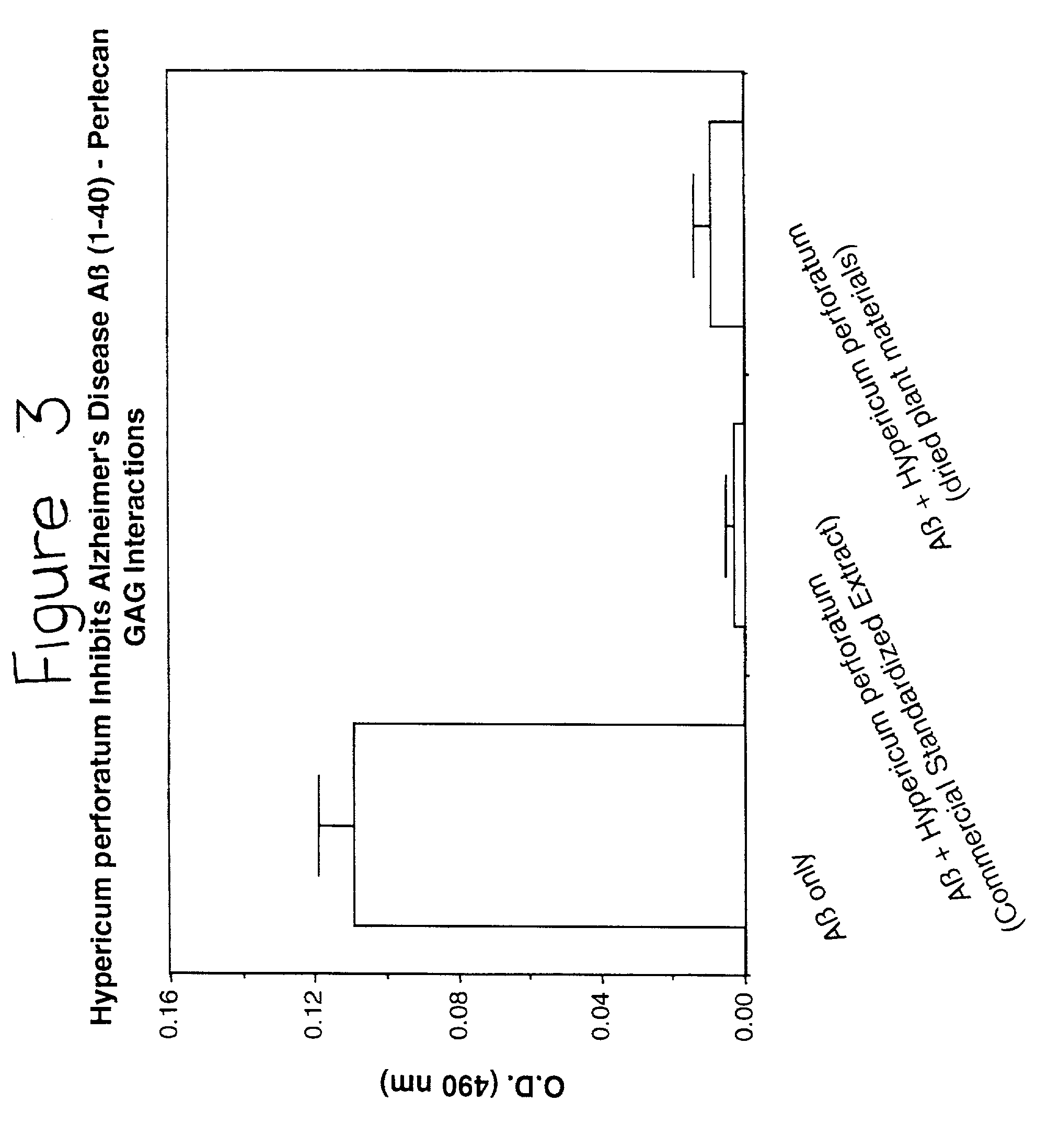Methods of treating Alzheimer's disease and other amyloidoses using Hypericum perforatum and derivatives thereof
a technology of hypericum perforatum and alzheimer's disease, applied in the field of compositions and methods for treating alzheimer's disease and other amyloidoses, can solve the problems of no cure or effective treatment, toxic and neuronal cell death, etc., and achieve the effect of inhibiting significant inhibition of a amyloid fibril formation
- Summary
- Abstract
- Description
- Claims
- Application Information
AI Technical Summary
Benefits of technology
Problems solved by technology
Method used
Image
Examples
example 1
Hypericum Perforatum Causes a Dose-Dependent Inhibition of Alzheimer's Aβ(1-40) Amyloid Fibril Formation
[0080]A previously described method of measuring amyloid fibril formation utilizing Thioflavin T fluorometry (H Naiki et al, Lab. Invest. 65:104–110, 1991; H Levine III, Protein Sci. 2:404–410, 1993; H Levine III, Amyloid: Int. J. Exp. Clin. Invest. 2:1–6, 1995; H Naiki and K. Nakakuki, Lab. Invest. 74:374–383, 1996) was employed initially to identify whether Hypericum perforatum was capable of inhibiting Alzheimer's Aβ1-40 amyloid fibril formation. Using this sensitive assay, any decreases or increases in fluorescence was previously shown to correlate with a decrease or increase in the amount of amyloid fibrils (H Naiki et al, Lab. Invest. 65:104–110, 1991; H Levine III, Protein Sci. 2:404–410, 1993: H Levine III, Amyloid: Int. J. Exp. Clin. Invest. 2:1–6, 1995; H Naiki and K. Nakakuki, Lab. Invest. 74:374–383, 1996), allowing one to determine the identity and extent of potential...
example 2
Hypericum Perforatum Inhibits Alzheimer's Amyloid Fibril Growth
[0086]In Alzheimer's disease and other amyloidoses, amyloid fibril growth is believed to involve amyloid protein self-interactions (ie. Aβ-Aβ interactions). Any potential effective therapeutic agent for amyloid deposition, accumulation and / or persistence should also be capable of causing an inhibition of amyloid protein self-interactions. This is important for preventing any new amyloid fibril formation when treating Alzheimer's disease patients at early stages of the disease. ELISA methodologies (i.e. solid phase binding assays) were therefore used to identify compounds which were capable of inhibiting Aβ-Aβ interactions (i.e. Alzheimer's amyloid fibril growth).
[0087]Aβ(1-40) was first labelled with biotin according to the following protocol. 1 mg of Aβ(1-40) (Bachem Inc., Torrance, Calif., USA; Lot #WL934) was dissolved in 200 μl of PBS (pH 8.0) and incubated for 1 week at 37° C. The fibrillar Aβ solution was then adde...
example 3
Hypericum Perforatum Inhibits Aβ-Glycosaminoglycan Interactions
[0091]One study was implemented to determine whether Hypericum perforatum was an effective inhibitor of Aβ-proteoglycan / glycosaminoglycan (PG / GAG) interactions. Since PGs / GAGs have been found to accumulate in amyloid deposits and are believed to prevent the body's natural ability to remove unwanted “amyloid” (reviewed in Snow and Wight, Neurobiology Aging 10:481–497, 1989), an inhibitor of Aβ-PG / GAG interactions is a desirable additional target for an amyloid therapeutic. In this study a solid phase binding immunoassay was utilized to determine whether Hypericum perforatum obtained from dried plant materials or from the powdered contents of gelatin-coated capsules containing standardized Hypericum perforatum extract (i.e. 0.3% hypericin) obtained commercially was an effective inhibitor of Aβ-PG / GAG interactions.
[0092]12 μg of perlecan glycosaminoglycans (isolated from the Engelbreth-Holm-Swarm sarcoma as previously descr...
PUM
 Login to View More
Login to View More Abstract
Description
Claims
Application Information
 Login to View More
Login to View More - R&D
- Intellectual Property
- Life Sciences
- Materials
- Tech Scout
- Unparalleled Data Quality
- Higher Quality Content
- 60% Fewer Hallucinations
Browse by: Latest US Patents, China's latest patents, Technical Efficacy Thesaurus, Application Domain, Technology Topic, Popular Technical Reports.
© 2025 PatSnap. All rights reserved.Legal|Privacy policy|Modern Slavery Act Transparency Statement|Sitemap|About US| Contact US: help@patsnap.com



